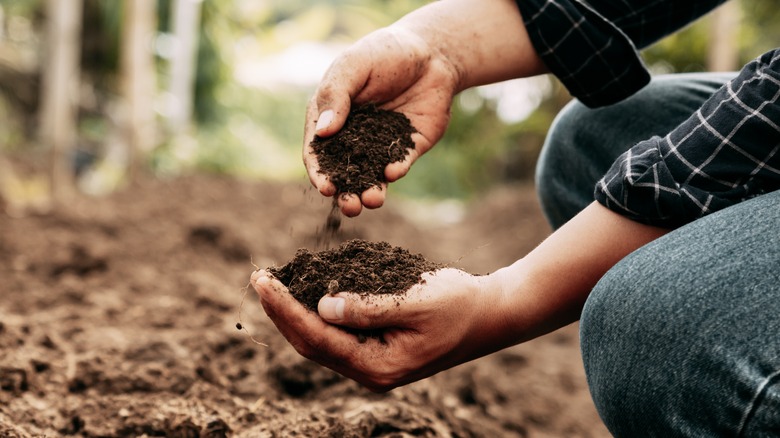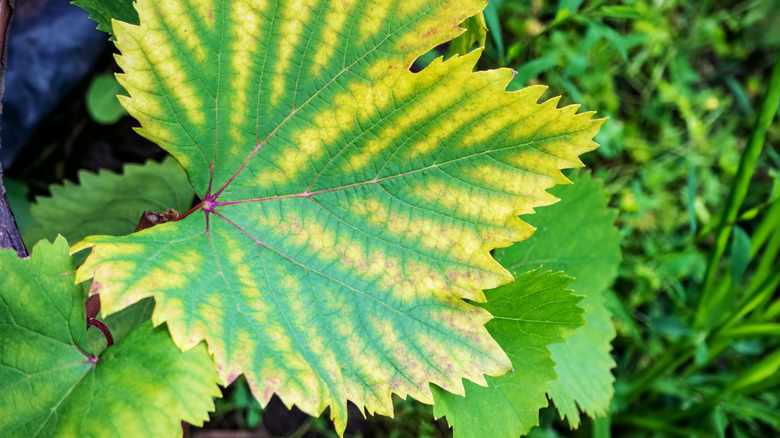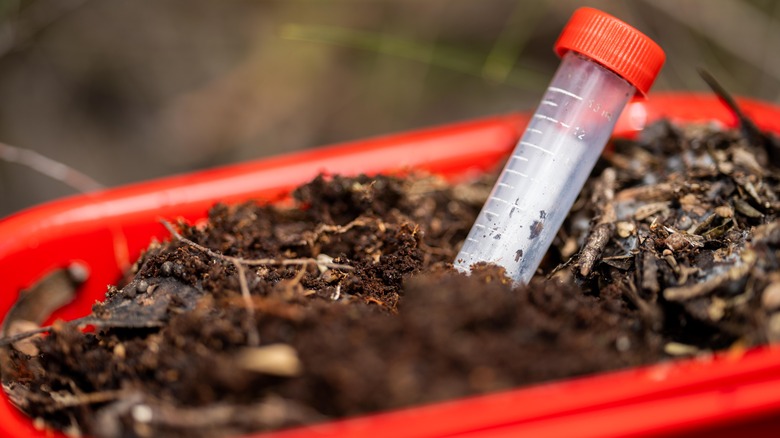Easy Ways To Tell If Your Garden Soil Is Lacking In Nitrogen
We may receive a commission on purchases made from links.
Are your garden plants losing their emerald-green color and turning yellow? Many issues could be causing the chlorosis. The yellowing foliage you're seeing may stem from improper watering, viral infections, encroaching weeds, and nutrient deficiencies. Among the latter, the lack of nitrogen is a common root cause that deprives leaves of their greenness.
Nitrogen is a constituent of chlorophyll — the compound plants use to convert solar energy into sugar for nutrition. It's also the component that makes plants' foliage and stems green. Without sufficient nitrogen, the plants suffer from a lack of chlorophyll, which causes the leaves to lose their characteristic green color and blocks their sugar production.
But yellow foliage isn't the only symptom of soil nitrogen deficiency. Nitrogen is omnipresent in plants and fulfills several key functions that promote their healthy growth. That's why nitrogen-starved plants will likely show a number of distress signs that go beyond leaves losing color. You should learn to recognize these signs quickly and take quick action to address the deficiency. With this knowledge, you'll return your garden beauties to their peak health as quickly as possible.
Red flags that point to nitrogen deficiency in your garden soil
Apart from the loss of green pigment, plants suffering from low nitrogen levels in the substrate can exhibit abnormal development of the stems and roots. That's because nitrogen helps control the development of plant tissue, and its absence quickly leads to growth problems and deformities. For example, some of the slightly older leaves on your garden plants may begin to senesce and whither away far earlier than they normally would. If the nitrogen deficiency is severe enough, you may even find that your shrubs and flowers aren't growing tall enough — or fast enough — and look stunted.
Meanwhile, nitrogen deficiency can have the opposite effect on a plant's roots. Often, plants living in soil that lacks nitrogen will grow larger root systems in an effort to extract as much of this element as possible from the substrate. That's why poking around in the soil may reveal that your plants' roots have started to grow out of control.
How to measure your soil's nitrogen content
While certain symptoms likely indicate soil nitrogen deficiency, you shouldn't leave things to chance. Take the time to test the soil properly. Not only will such a test confirm the lack of this nutrient, it will also tell you how far off your soil is from healthy nitrogen levels.
To perform a soil test, you can use a test kit such as this one from Home Depot. A kit like this comes with a tube and reagent tablets. Place a soil sample in the tube, add water, throw in a tablet, shake the mix, and then compare the resulting color against the nitrogen color chart provided with the kit. The color comparison will give you a good idea of far below normal the soil nitrogen content actually is.
If you've confirmed that insufficient nitrogen is responsible for your plants' health issues, you can quickly boost the levels of nitrogen in the soil by treating it with a high-nitrogen fertilizer. Sulfate of ammonia is a suitable option for this task. Nitrogen leaching is one of the consequences of excessive rainfall, and the element can just as easily escape the soil due to irrigation. That's why fertilization is just a band-aid solution. To maintain your garden's health in the long term, consider adding organic mulch to the soil around your plants — it will release nitrogen into the substrate slowly as time goes by.


